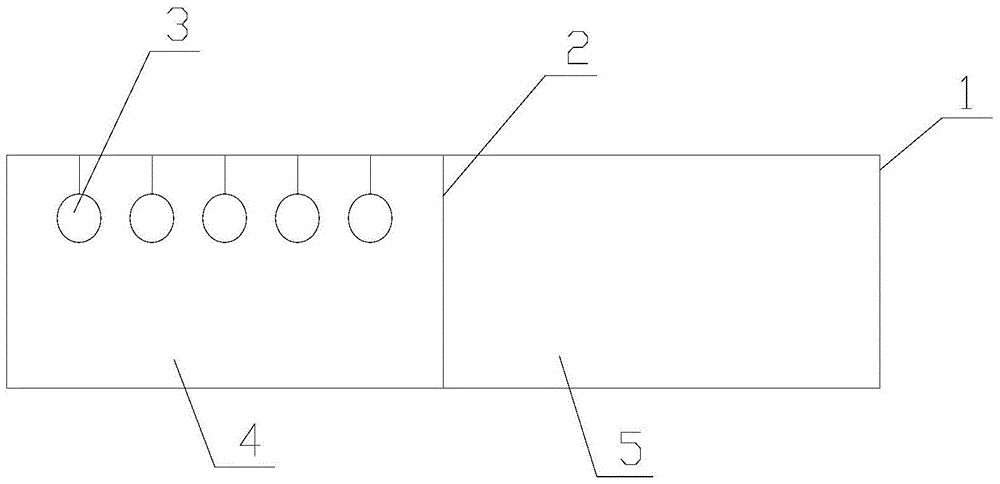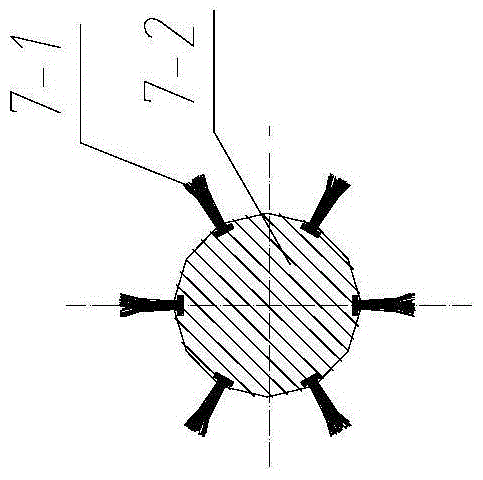Separation method and device for yellow mealworms
A separation method and technology of a separation device, applied in the field of insect breeding, can solve the problems of poor separation effect of dead insects and live insects, high noise, etc., and achieve the effect of overcoming complex equipment structure, high separation efficiency and good separation effect.
- Summary
- Abstract
- Description
- Claims
- Application Information
AI Technical Summary
Problems solved by technology
Method used
Image
Examples
Embodiment 1
[0029] A kind of Tenebrio molitor separation method of the present embodiment utilizes the photophobia of Tenebrio molitor to set light zone and dark zone in the culture container of Tenebrio molitor, adopt green light source to irradiate Tenebrio molitor, live worm crawls to dark zone, dead worm, Feces and feed remain in the light zone, thereby separating live insects.
[0030] The green light source can be a light bulb with a power of 5-11W, preferably 8W.
[0031] Experimental research was carried out on the separation method of Tenebrio molitor, and Tenebrio molitor was tested under light sources of different wavelengths. It was found that when the wavelength of the light source was 570-600nm and 400-480nm, Tenebrio molitor did not have any light-aversion reaction to the light source. When the wavelength is between 490-550nm, Tenebrio molitor will show aversion to light (that is, stay away from the light source), and the specific results are: (1) Blue light: Under the acti...
Embodiment 2
[0033] The Tenebrio molitor separation method described in embodiment 1 is applied to the Tenebrio molitor separation device of large-scale cultivation, its structure is as follows figure 1 Shown, comprise breeding box 1, baffle plate 2 and green light source 3, the middle part of breeding box is provided with movable baffle plate, when baffle plate is closed, baffle plate divides the space in the breeding box into light zone 4 and dark zone that the bottom is not connected. Zone 5, the top of the light zone is equipped with a green light source.
[0034] The baffle is a plug-in structure, and the top or side of the breeding box is provided with a socket (not shown in the figure), and the baffle is vertically inserted into the breeding box from the socket. When the baffle needs to be opened, just pull the baffle directly from the socket.
[0035] When the Tenebrio molitor separation device is used, in the daily cultivation of Tenebrio molitor, the baffle is closed, the Tenebr...
Embodiment 3
[0037] The present embodiment is a Tenebrio molitor separation device. Compared with Embodiment 2, the difference is that the baffle plate is a hinged structure, and the upper or middle part of the baffle plate is connected with the breeding box through a hinged shaft. When the baffle needs to be opened, it is only necessary to turn the hinged shaft to overturn the baffle so that the light area and the dark area under the baffle are connected.
PUM
| Property | Measurement | Unit |
|---|---|---|
| Power | aaaaa | aaaaa |
Abstract
Description
Claims
Application Information
 Login to View More
Login to View More - R&D
- Intellectual Property
- Life Sciences
- Materials
- Tech Scout
- Unparalleled Data Quality
- Higher Quality Content
- 60% Fewer Hallucinations
Browse by: Latest US Patents, China's latest patents, Technical Efficacy Thesaurus, Application Domain, Technology Topic, Popular Technical Reports.
© 2025 PatSnap. All rights reserved.Legal|Privacy policy|Modern Slavery Act Transparency Statement|Sitemap|About US| Contact US: help@patsnap.com



